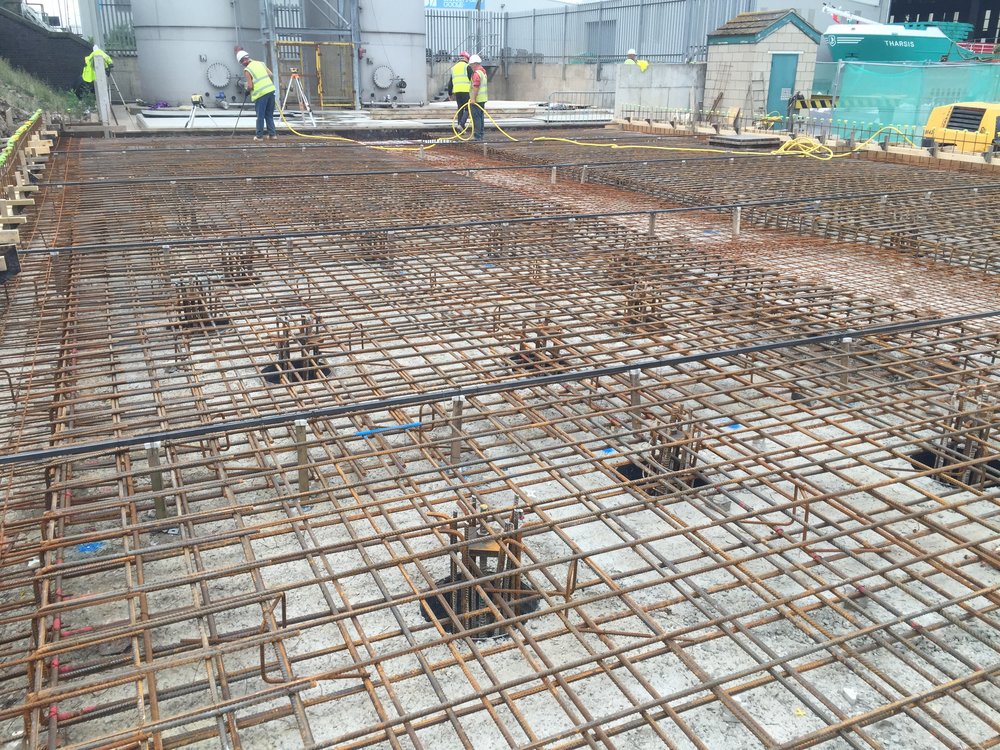 Most of the civilian buildings use reinforced concrete that is found in their resistance structure. Another use for this product is to make tiles for various residential or commercial structures.
Most of the civilian buildings use reinforced concrete that is found in their resistance structure. Another use for this product is to make tiles for various residential or commercial structures.
What is reinforced concrete?
Reinforced concrete is based on the physical connection between the incoming concrete in the preparation plant and a reinforcing network directly mounted or built on-site in a formwork.
Whether it will result in a tile, a pillar or a floor, each of them will have certain durability qualities for a long time.
These qualities are recognized by increased resistance to climatic factors, seismic and superstructure loads, as well as to corrosive agents.
Types of reinforcement
The designers and the builders rely on the malleability of the material when they put into operation a reinforced concrete structure.
Formworks are the ones that allow the delimitation and a precise shape that will result from the mechanized casting of concrete delivered by the concrete plant. Most of the products where reinforced concrete is required are those that are part of the building’s structural strength.
With the same benefits, we can notice the products that involve a concrete slab reinforcement for horizontal areas.
Fiber reinforcement
The concrete reinforcement process can be carried out on site. In practice, however, there are modern solutions that can eliminate this work/reinforcement for some products. As such, the reinforcement of the concrete material can be performed in the concrete preparation plant and delivered to the site. Special fibers will be introduced into the structure, which will play both the reinforcement role and have an added advantage for the beneficiary. It’s about canceling the magnetic field effect produced by the classic steel armature. Such structures can also help stabilize your sunken concrete.
Iron reinforcement
In practice, the protocol for the production of reinforced concrete materials includes the preparation of a space bounded by the formwork in which the iron reinforcement network is located. For projects that do not require structural resistance, welded nets can be used.
Horizontal planes for reinforced concrete slabs are the easiest to execute. And for them will be chosen iron nets with the appropriate thickness in relation to the height of the mechanized casting.
As a benefit, a sustainable product is obtained, and with minimal financial resources.
Steel fittings
If the designer specified that the reinforcement would be made of steel, then it is clear that it is a structure of resistance. Steel bars, of varying thickness, are cut and laid in such a way to embellish the molded structure inside.
For each type of floor structure, concrete slabs, columns, etc. steel-reinforced concrete and high-quality shuttering are necessary.
The purpose is to obtain a durable structure in which the density of the reinforced concrete is in accordance with the project.
Where is it used?
The range of works in reinforced concrete constructions is varied and demands quality work. For private or commercial beneficiaries, construction is guaranteed for decades, so the price justifies the quality level as long as it works in coordination with the mechanized concrete preparation and casting plant.
From individual houses to warehouses with different surfaces, public institution offices or private companies to recreational areas and sport facilities – each can have at least one of the following type of reinforced structures:
Poles
Projects that include roofing use reinforced concrete poles. The level of load to be sustained is clearly specified in the project, therefore the formwork, reinforcement, and the concrete recipe that is continuously and mechanically pouring must respect the standards.
Foundations
The foundation is the basic aspect of a building. The execution steps must be followed, starting with setting up the land, the reinforcement, the formwork, the casting, and the finishing stage of the surface.
Starting with the reinforced concrete foundation, the rest of the structure will be raised according to the standards and current regulations.
This aspect is essential in order to obtain the density according to the standards and requirements. Depending on the type of foundation, the construction can have one or more floors.
Reinforced concrete slabs
The reinforced concrete slab means mechanical casting and vibration of a product that becomes an integral part of the project.
It is achieved by forming a formwork in which the reinforcement shown in the specifications is placed. It is interconnected with the rest of the structure.
Learn more
Portable concrete barriers (PCBs) have significantly improved the safety and efficiency of construction sites. Although these concrete barriers ar ...
There are many different options when it comes to choosing a home to live in. Among the materials that are often used for constructing residential ...
Once upon a time, disaster recovery was about fixing roads and buildings after some sort of natural phenomenon. Today, however, things have change ...
The Danger of Public WIFI Connections We talk about public WIFI not in order to mention connections in general, since these are a common elemen ...
The success to business not only lies in the production of the particular commodity, but also how you market and distribute it. Packaging is v ...







